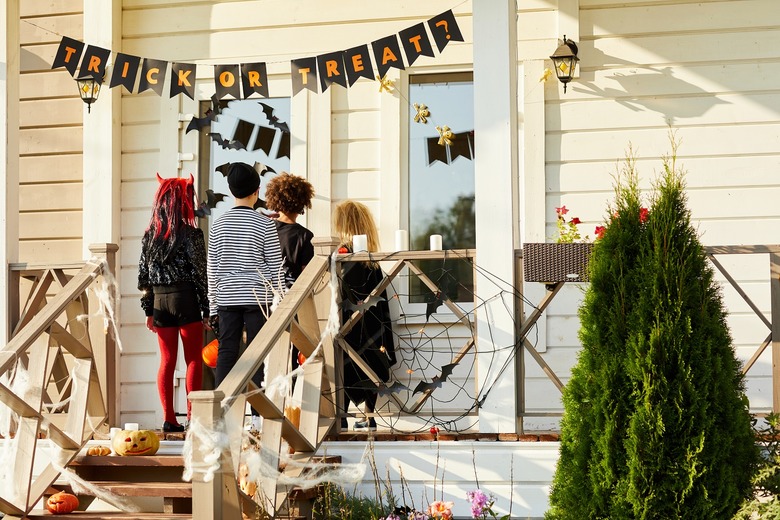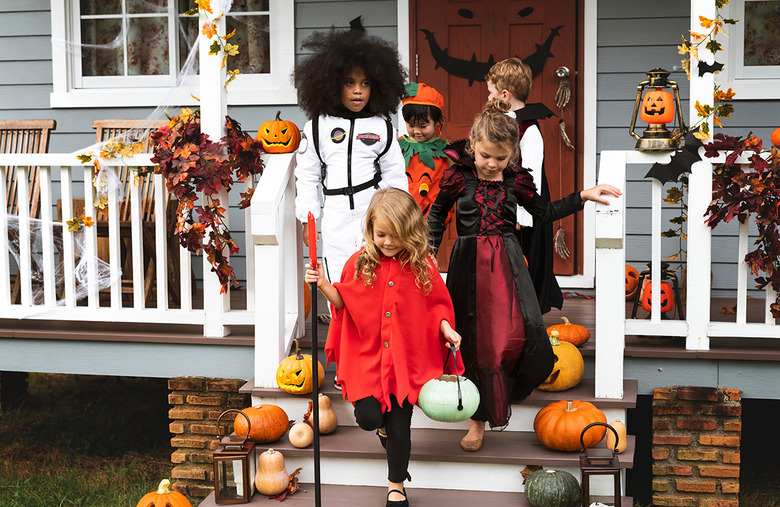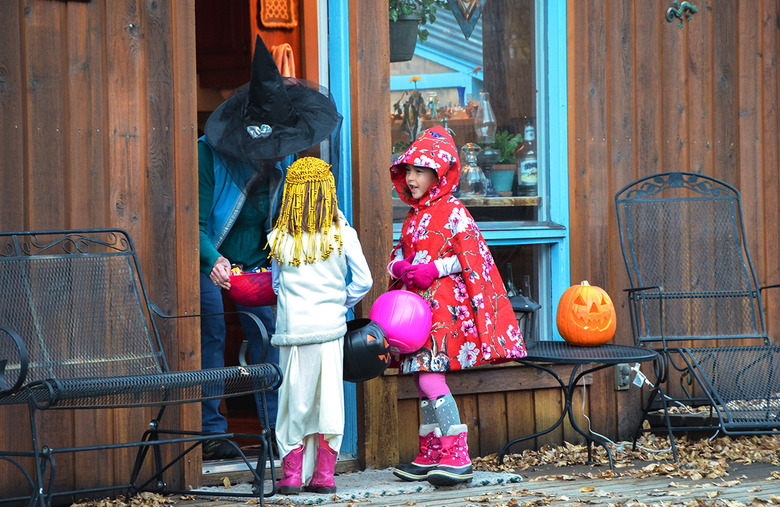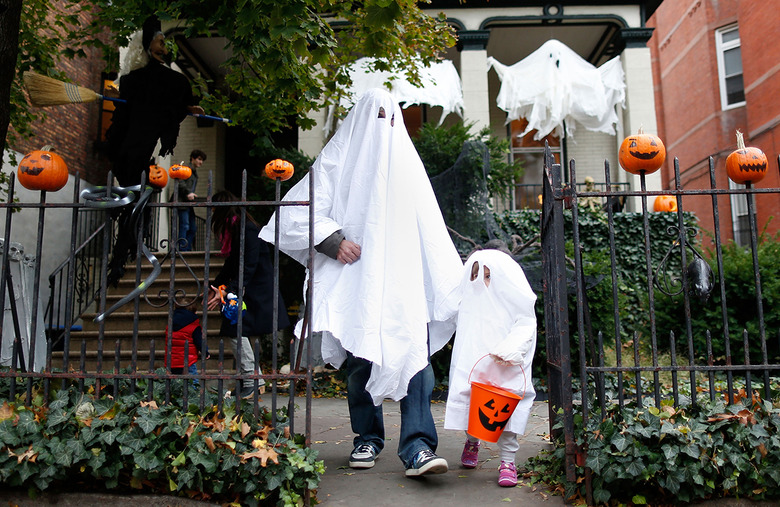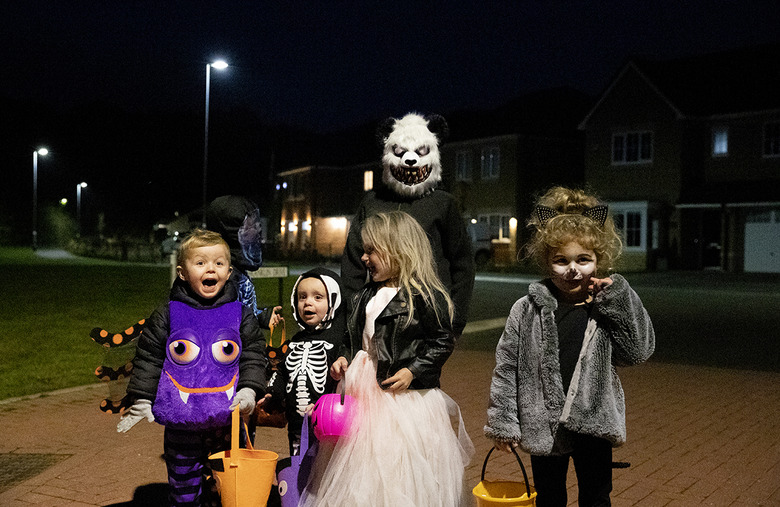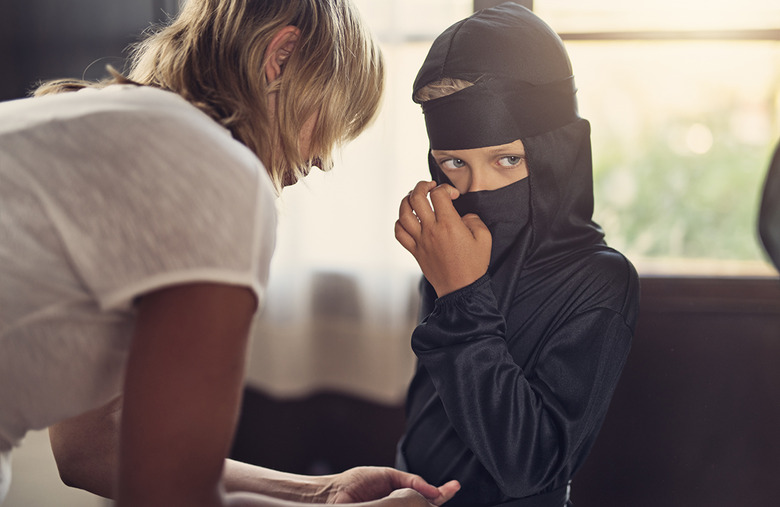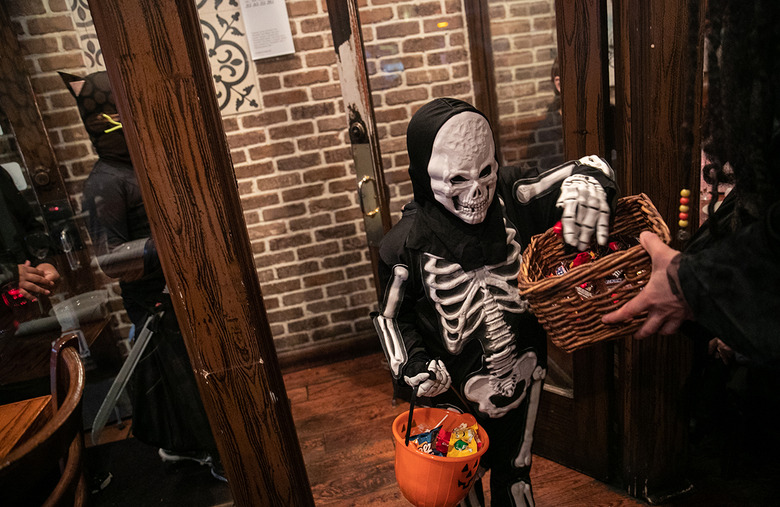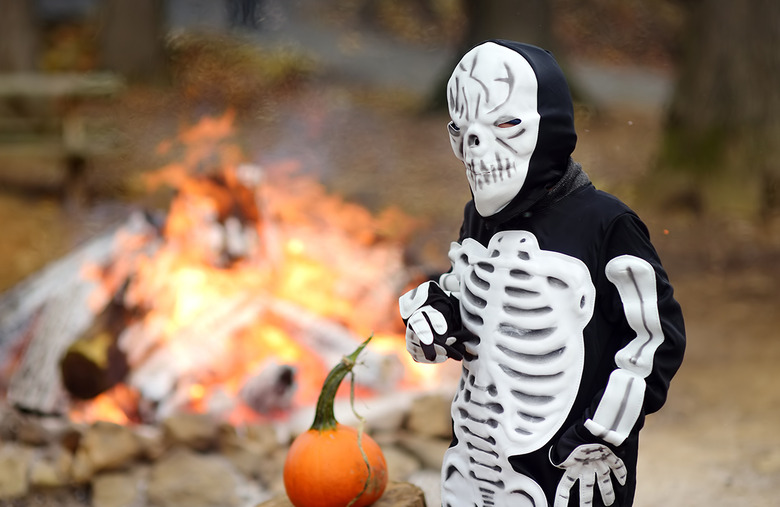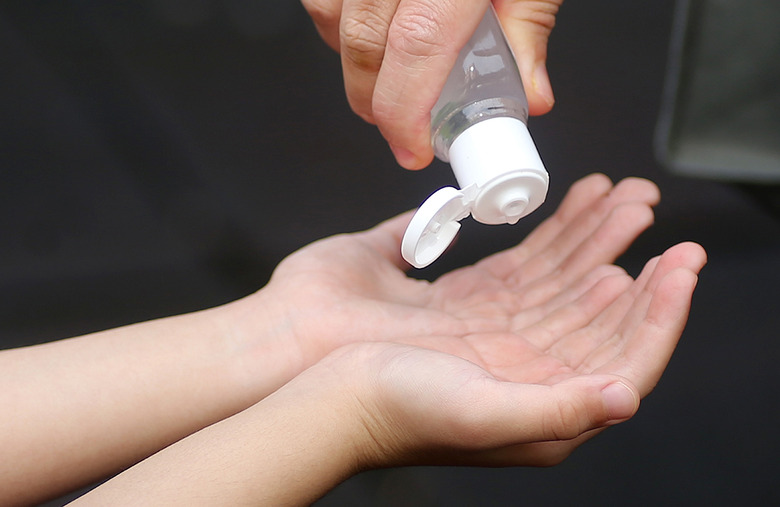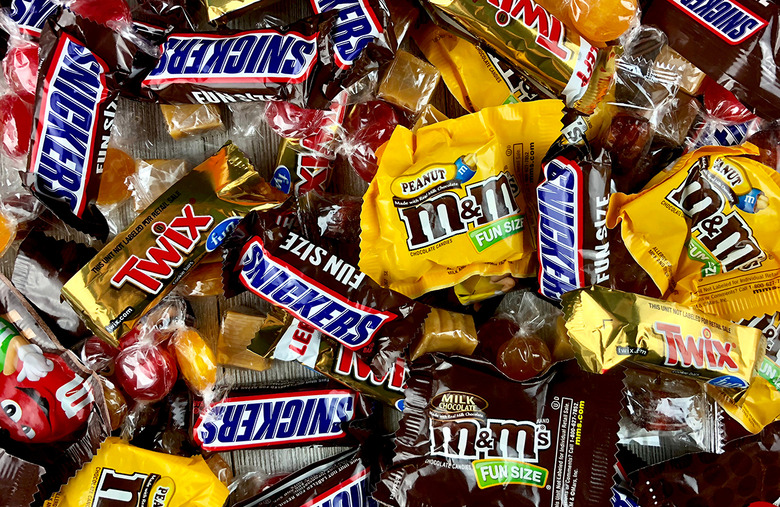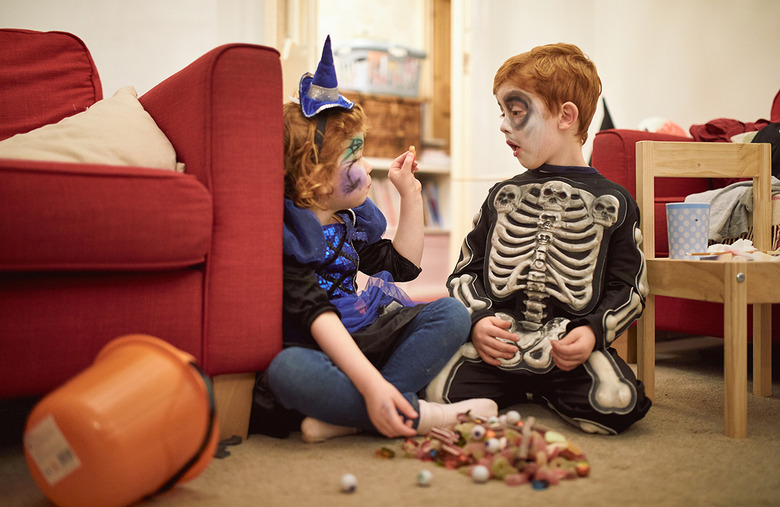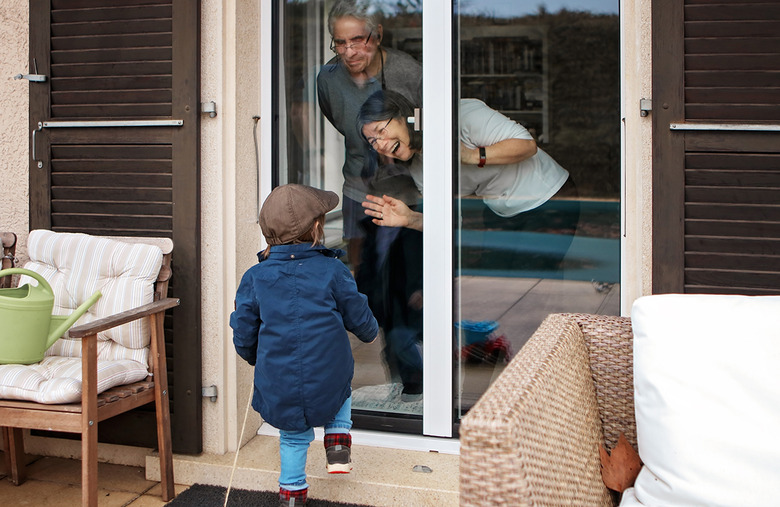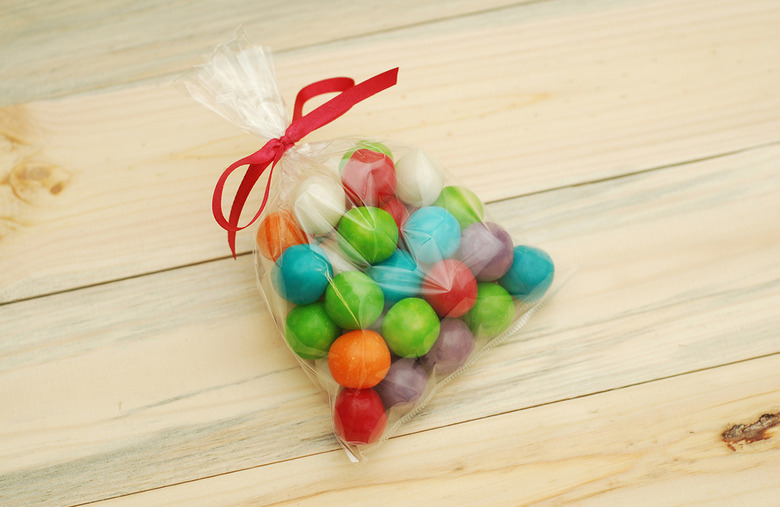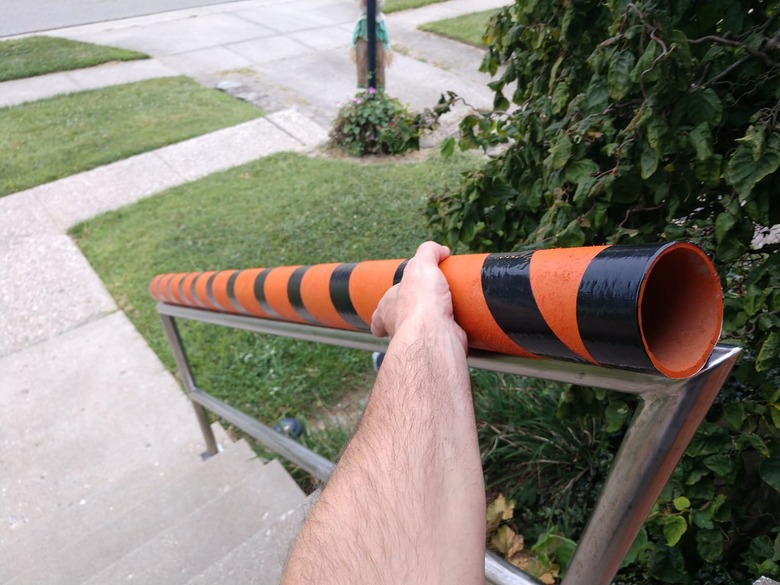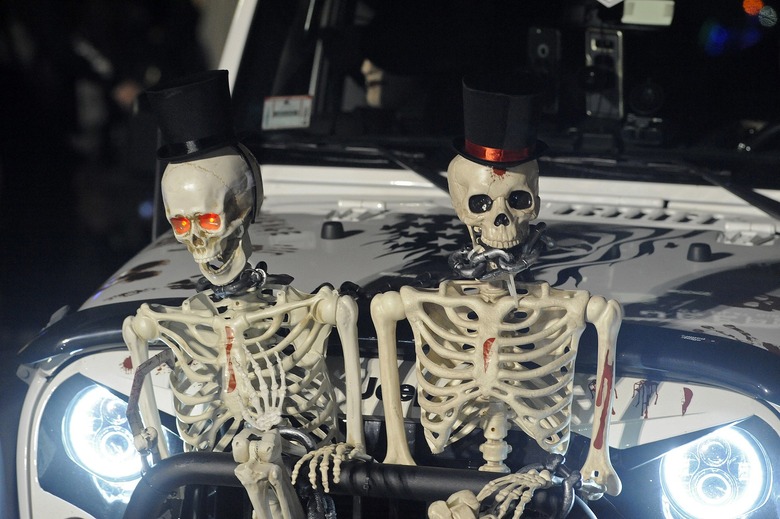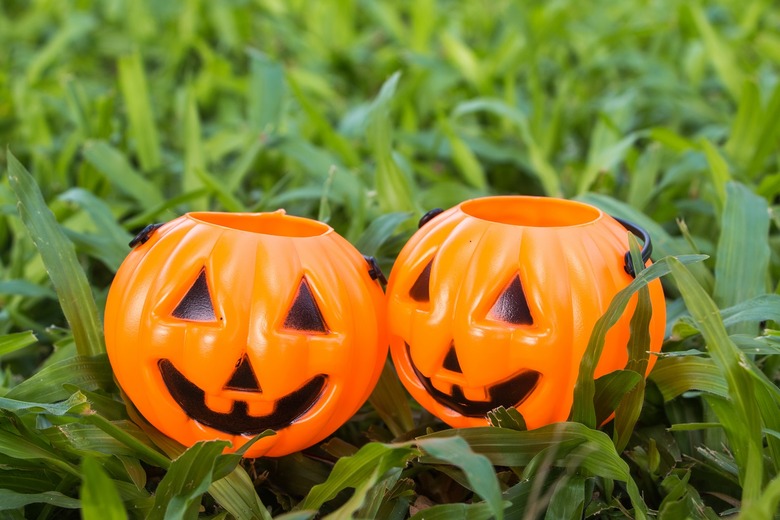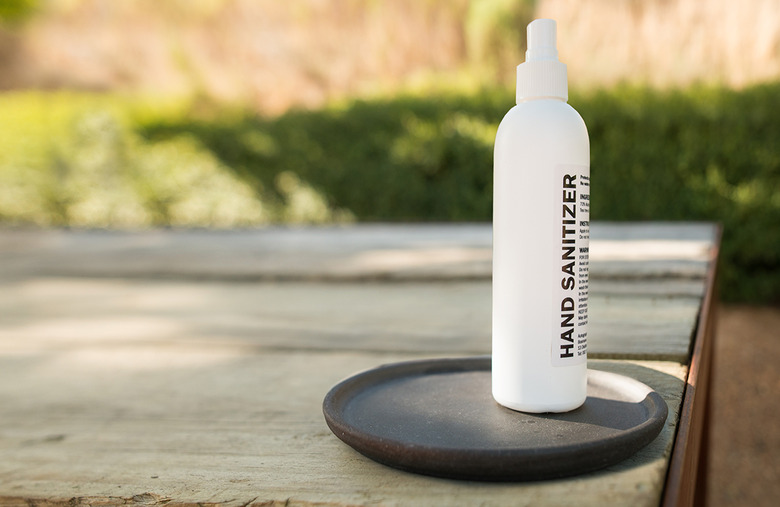Social Distancing Trick-Or-Treat Ideas For A Safer Halloween
There are a lot of ways, both big and small, that the coronavirus pandemic has changed lives. Schools, travel, work and even the way holidays are celebrated has changed. As the pandemic shows no signs of slowing down, it's not too early to wonder what Halloween will look like in 2020.
How can you trick-or-treat safely this October? The Daily Meal spoke with Dr. Amyna Husain, a physician in pediatric emergency medicine at Johns Hopkins who specializes in disaster preparedness for pediatrics, and emailed with Dr. Gary Reschak, a pediatrician at Northwestern Medicine Huntley Hospital, to see how trick-or-treaters and adults handing out candy can safely handle Halloween.
Trick-or-treating is not a lost cause
"I can't say that trick-or-treating is lost this year," Dr. Amyna Husain said. "I think there are ways to do it safely." Here's how to do it and stay safe.
For everyone: Rules and regulations may vary by city, county and state
The first thing you should do when researching trick-or-treating is check state, county, local and even neighborhood regulations. The rates of coronavirus have varied across the country, and the percentages of people at high risk per state vary as well. Be cognizant of the rates and rules in your area to determine whether or not the activity is a good idea.
For trick-or-treaters: Go in shifts
Husain has one recommendation for neighborhoods and cities: designate shifts for who trick-or-treats when. "I think having truncated time or shifts of time that people are trick-or-treating in a community [is safer]," she said. "Designating by times or by areas, odd houses, even houses, however an area would like to do it. It's not going to be a one size fits all."
For trick-or-treaters: Trick-or-treat with people in your ‘pandemic pod’
It's fun to go trick-or-treating with friends, but for 2020, keep it with close friends and family members, or within your child's schooling pandemic pod. "If a group of kids are going trick-or-treating, they may be going with other family members," Husain said. "You don't want to be mixing kids that don't normally mix with each other to continue to keep people safe from others they aren't already exposed to all the time."
For trick-or-treaters: Go outside
"If everyone stays outside, wears a mask and uses good hand hygiene, Halloween can be a safe and manageable celebration," Reschak said. Avoid trick-or-treating for an extended period of time at indoor events or in apartment buildings.
For trick-or-treaters: Avoid big parties
Halloween parties in a spooky real-life haunted house or hotel have been popular in the past, but for 2020, keep it to socially distanced trick-or-treating. "Outdoor locations are always better, and if you live in an area of the country that may have a rainy or cold Halloween, I wouldn't recommend going to an indoor celebration," Reschak said. "The risk goes up substantially when you attend an indoor event with a lot of people."
For trick-or-treaters: Stay in your neighborhood
While traveling to the neighborhood with the biggest mansions (and, thus, biggest candy bars) is a Halloween tradition, keep it on your own block this year. "It's definitely safer to stay closer to home," Husain said. "Those are people you've been around more often, so there's less of a chance of spreading outside your area." There's even an unexpected plus to this plan: more candy. "There's going to be a limited time and opportunity to trick-or-treat. From a child's standpoint, you might be able to hit more places if you're not going further away."
For trick-or-treaters: Wear a mask ...
One of the top tips for coronavirus safety, whether you're at the grocery store or dining at a restaurant, applies to Halloween trick-or-treating as well: wear a mask. "The most important precaution is wearing an appropriate mask because the virus that causes COVID-19 is spread through respiratory droplets," Reschak said. In fact, you can incorporate your mask into your costume. Husain noted that health care worker costumes, ninja costumes and other costume ideas are especially suited for masks.
For trick-or-treaters: … But not a rubber mask
Some of the most sought-after Halloween costumes feature rubber or plastic masks: think Pennywise the clown, Michael Myers or a horse. But those are not the same as a cloth face covering. "A costume mask is not the same as a surgical mask or fabric face covering," Reschak said. "If your child's costume includes a mask, it's better to layer masks than rely on a costume for protection."
For trick-or-treaters: Make sure the masks and costume are comfortable
Ensure that you and your child are not just wearing a face mask properly, but that it's also comfortable. Trick-or-treating is a physical activity that can last for hours, so you want to ensure it has good wearability. "People need to be careful that the mask is actually covering the nose and the mouth safely enough that the child is not going to have trouble breathing and not want to take it off because it's so uncomfortable," Husain said. "Try out the costume before Halloween so they know it's comfortable."
For trick-or-treaters: Gloves are not your friend
Are gloves the best thing to wear during the coronavirus pandemic? Not so much. Gloves will protect your hands, sure, but if you put those gloved hands to your face, you may be in trouble. "Regardless of whether you're wearing gloves or not, you may touch your eyes, nose and mouth and then go ahead and touch something else," Husain said. "So gloves by themselves are not protective."
For trick-or-treaters: Practice good hand hygiene
Instead of opting for gloves, Husain recommends carrying clip-on hand sanitizers for trick-or-treating and using the sanitizer between houses. Reschak echoed that recommendation. "If you choose to go house to house for trick-or-treating, be prepared to practice good hand hygiene at every location," he said. "Bring along hand sanitizer to use before you move from one location to another."
For trick-or-treaters: Wrapped candy can be safe
Halloween is about one thing: the best candies. So are those mini Snickers bars and tiny boxes of Dots safe to eat? "All candy should be wrapped, you should not be consuming any candy that is not wrapped or safe," Husain said. "Any wrapped candy, buying candy now at the store, should be completely safe."
For trick-or-treaters: If you want to sanitize candy, here’s how
Still not sure whether or not you want to eat that candy? That's OK. Reschak said you can let it sit for 10 to 14 days before consuming. You can also wash the outside wrapper with soap and water or check the FDA and CDC guidelines as Halloween approaches.
For trick-or-treaters: Consider buying your own candy
If you're uneasy about getting Halloween candies from your neighbors, you can always just buy some for you and your little ones. "The best way for kids to receive candy would be from their own parents," Reschak said. "They can still trick-or-treat, but their parents could hand them the candy at each stop. That would greatly reduce the likelihood that the virus would be transmitted on wrappers."
For everyone: Get a flu shot
It's always important to get your flu shot, but for 2020 (and before trick-or-treating), it's even more important. "Parents and children should get their annual flu shots before Halloween this year," Reschak said. "We definitely want to avoid getting influenza and this coronavirus at the same time. Another reason we want to reduce the spread of the flu this year is to conserve medical resources. Every prevented case of influenza gives us more resources to use as we care for people who have COVID-19."
For candy givers: Stay behind a storm door
If you can, stay inside while handing out candy. "It's always wonderful to be able to see kids dressed up. If you can do that from behind a storm door with glass, that'll be safer," Husain said. "You'll be able to wave or see the kids but not expose yourself." This tip is especially important for vulnerable populations. "It's oftentimes the elderly at home giving out the candy while the younger folks are taking the kids around. That's a population you want to be careful for," she said.
For candy givers: Keep candy in individual baggies
Passing candy to a child or having kids reach into a big bowl of sweets can cause cross-contamination in the middle of a pandemic. So how can you safely hand out treats? Use small plastic baggies. "Have candies, or whatever you choose to put out, out on the doorstep in small quantities that people can take," Husain recommended. "A Ziploc of treats to-go would be good instead of having a full bowl and having a kid put their hand in a full bowl after another kid puts their hand in that full bowl and continues to spread the virus."
For candy givers: Sit outside behind a decorated table
Social distancing saves lives. So, if you can do it on Halloween, do it. "If they're not a high-risk person, they can set out a table and sit 6 feet back from the table," Husain said. "That would definitely be an acceptable approach. That way they can continually resupply bags." Get creative and decorate your table as a fortune teller or mad scientist.
For candy givers: Get creative with a candy chute
Cincinnati father Andrew Beattie has gone viral this fall for his creative trick-or-treating hack. He took some common household items, a 6-foot cardboard tube, orange spray paint and black duct tape and created a "candy chute" that he attached to his handrail. If you have an old gift wrap tube and some markers, you can recreate this chute, which turns socially-distanced trick-or-treating into a bit of a game that's fun for kids and adults.
For candy givers: Organize a trick-or-treat parade
Get together with your neighbors and organize a sort of reverse trick-or-treating. Like COVID-19 birthday parties, have kids stand in their yards dressed in their spooky best. Then, adults can get in cars or ride bikes and toss out candy to the little ones like a Fourth of July parade.
For candy givers: Set up a candy scavenger hunt
According to the CDC, trick-or-treating traditionally is a higher risk activity. A low risk activity for Halloween? Scavenger hunts. Channel your inner Easter bunny, and place Halloween candy in tiny plastic pumpkins (think Easter eggs, but Halloween-y). Like an egg hunt, hide the treats around your neighborhood and let kids go wild.
For candy givers: Put hand sanitizer out
Hand hygiene is so important. While trick-or-treaters should keep a portable bottle of hand sanitizer with them, candy givers can also put out a pump bottle for those who are grabbing candy. Both doctors recommended this approach.
For candy givers: If you don’t want to participate, shut off your lights and post a sign
One of the classic rules of trick-or-treat etiquette is that if you don't want to participate, you keep your lights off. This is doubly important for 2020. In addition to keeping your porch lights off, Husain recommends communities give signs out to people who don't want to participate in trick-or-treating this year. "Maybe the community decides a certain sign in the doorway says this house is taking a pass this year and asks people not to stop at that home because people in that household are at higher risk and don't want to be exposed," she said.
For everyone: Consider trick-or-treat alternatives
If you don't feel safe trick-or-treating or your area has determined it isn't safe, there are ways to celebrate amid the coronavirus pandemic. "Set up a neighborhood parade where kids can wave to everyone and enjoy each other's costumes from a safe distance," Reschak said. "Then, go home and eat the candy you purchased for your family." And if you do buy your own candy, make sure you stock up on the most popular sweet in your state.
More from The Daily Meal:
The Most Popular Halloween Candy When You Were a Kid
The Spookiest Dishes to Serve at Your Halloween Party
How Restaurants Promote Social Distancing in Creative Ways
